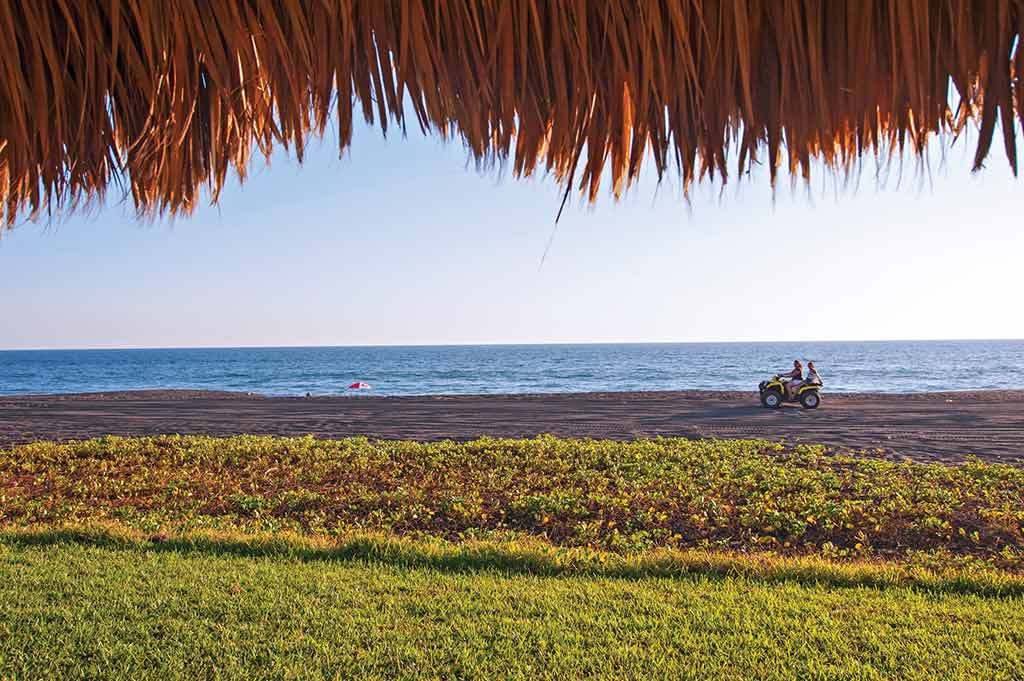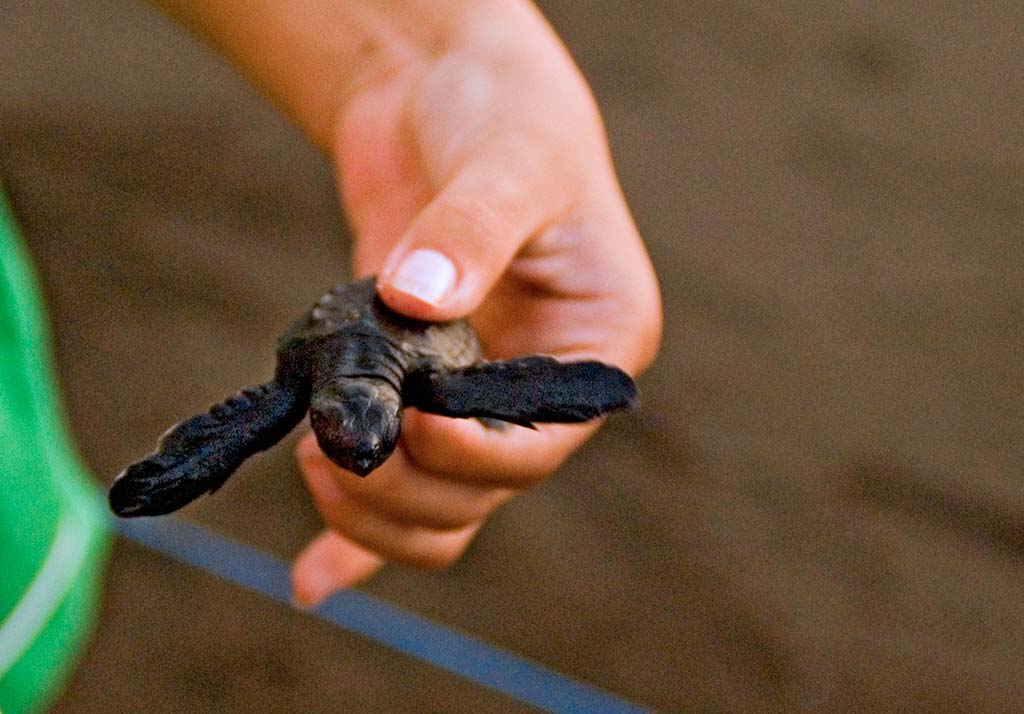Monterrico, once a sleepy fishing village with one hotel run by an ex-Peace Corps volunteer, is fast becoming popular with foreigners looking to get some time by the beach on their trip to Guatemala. The village has grown considerably in the last few years, as has the quality of its accommodations. It is a popular weekend destination with folks from Guatemala City and students from Antigua’s Spanish schools.
The same architects who gave Xocomil and Xetulul Parks their outstanding visual appeal were hired by INGUAT and local tourism authorities to provide Monterrico with an urban face-lift—complete with a tree-lined entrance to the main beach, pedestrian walkway, and a boat marina fronting Canal de Chiquimulilla. The pedestrian thoroughfare, officially dubbed Paseo de Don Pedro (after Pedro Cofiño Kepfer, a key player in masterminding Monterrico’s urban face-lift, who died in a tragic accident in 2007), has yet to attract the upscale businesses it seems to have been designed for. Nonetheless, it is a pleasant way to get from town to the beach.

The beach in Monterrico. Photo © Al Argueta.
Visitors can contribute to the conservation efforts of the local sea turtle conservation site via their paid admission to tour its grounds.Although it’s easy to see Monterrico as a beach destination, it should be noted that it was a protected sea turtle nesting site long before it became the haunt of beach-seeking vacationers. Visitors can contribute to the conservation efforts of the local sea turtle conservation site via their paid admission to tour its grounds. As for the beaches in Monterrico, there are, in all honesty, better and cleaner stretches elsewhere along Guatemala’s Pacific seaboard. The waves break very close to the sand here and the beaches slope dramatically downward, which means you don’t have a particularly wide stretch of beach, unlike at Iztapa or Tilapa farther west. The undertow, as along much of the Pacific Coast, is severe, and drownings are not uncommon. Exercise due caution.In addition to the beaches, Monterrico offers the opportunity to interact with nature in some unique ways, whether it’s touring the mangrove canals, holding a baby sea turtle in your hand before its maiden voyage out to sea, or watching a mother turtle come ashore to lay eggs in total darkness. Try to engage in at least one of these ecologically responsible activities while keeping in mind the ecological significance of this site. The sea turtles here have a fighting chance, though they are being wiped out elsewhere by the indiscriminate harvesting of their eggs. A newer threat to Guatemala’s coastal ecosystems comes from Canadian and Australian mining interests, as its black-sand beaches are said to harbor 12 percent of the world’s iron reserves.
Eight kilometers east along the sandy shoreline is Parque Hawaii, a remoter turtle nesting and iguana and crocodile breeding site on a pretty beach marked by the presence of sand dunes. The Wildlife Rescue and Conservation Association (ARCAS) has a sea turtle, crocodile, and mangrove conservation project here. Volunteers are welcome for a minimum one-week commitment ($90 per week for accommodations only) and assist in various projects, including animal care, construction projects, mangrove reforestation, environmental education, and turtle egg collection and hatchery management. Volunteers are also needed for another project in the neighboring village of El Rosario, six kilometers east. Turtle nesting season runs June-November with the peak of the action in August and September.

A baby sea turtle in Monterrico. Photo © Al Argueta.
Hawaii is host to a few weekend homes for Guatemala’s elite but has also added some recommended hotels of late. It has an online presence at www.hawaiiguatemala.com. You can get to Hawaii from Monterrico via public bus ($0.50), pickup ($4), or a 20-minute boat ride through the canals ($12). Buses leave at 6am, 11am, 1:30pm, and 3:30pm.
Excerpted from the Fifth Edition of Moon Guatemala.